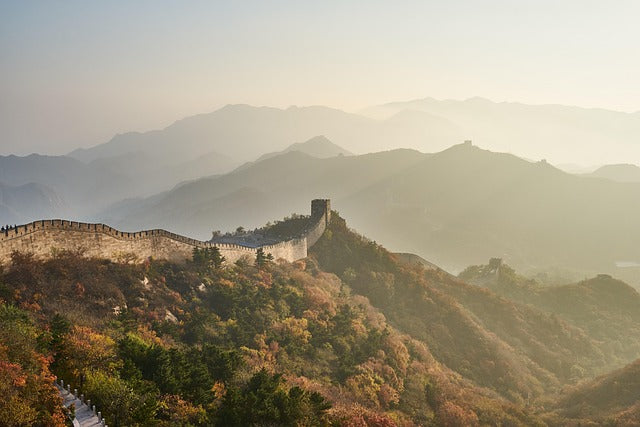
The Terroir Difference: 12 Famous Chinese Teas
Michele LillieChina is the birthplace of tea and is still a major producer of this beloved beverage. As we continue our exploration of the concept of terroir and tea, let us look at the terroir of China. If you haven’t read our prior post explaining terroir, we encourage you to read that post first.
Tea loves a “complex” environment with wide changes in temperature throughout the day, changing skies with both clouds and sun and higher elevations. Because it is more challenging to thrive in this environment, chemical changes occur, leading to more complex flavors.

Although an area’s total terroir greatly influences a tea’s flavor and can even vary within regions, some generalities can be made. Tea plants growing in more sunlight tend to be bolder in flavor and somewhat more bitter. This is because the plants grow more quickly in this environment and do not develop the more complex and mature flavors found in teas from plants that grow more slowly. Slower growth happens in areas with colder climates and those at higher altitudes. This results in a tea that is sweeter and more nuanced in flavor.
Other plants growing in the area are also part of terroir. The presence of flowers might lead to floral notes in the tea. Other plants, such as pine and mushrooms, can also have an influence. This often happens with wild-growing tea trees/shrubs as they grow adjacent to other plants.
China is a vast country, about 3.7 million square miles. It should be no surprise that the terroir will vary from region to region. China’s tea-growing areas are divided by geography. Each of these large regions contains several different tea-growing areas. We will explore just some of the major tea-producing regions and the famous teas that are grown in those areas.
Yunnan province
Location – Yunnan is found in southwestern China. Yunnan is considered the birthplace of tea and, to this day, is regarded as China's most famous tea-growing region.
Terroir – It is a mountainous area with elevations that vary by more than 10,000 feet. Due to this varied terrain, the climate is diverse. It can range from an almost tropical environment to a subtropical climate with cooler and drier winters. Its soil is rich, red and abundant in minerals. This results in an earthy and robust tea. The altitude is significant as it brings cooler temperatures that slow the plant's growth and intensify flavor.
Teas - The most famous tea from this area is Pu-erh, although it is also very well known for its production of black teas, such as Dian Hong (Yunnan Golden Tips). These teas are complex and earthy.
Fujian province

Zhejiang province
 Location - This eastern coastal province is mainly known for producing green teas.
Location - This eastern coastal province is mainly known for producing green teas.
Anhui province
Henan Province
Guangxi province
What Does This Mean for the Average Tea Drinker?
For the beginning tea drinker, understanding terroir can help you make more informed choices. If you prefer lighter, floral notes, perhaps start with teas from Fujian. Yunnan teas could be your go-to if you're drawn to bold flavors.
For the tea enthusiast, diving into terroirs allows you to fine-tune your palate and deepen your appreciation for tea. You can even explore teas from the same region but harvested in different seasons to uncover how terroir is a dynamic, ever-changing influence.
In Conclusion
The terroirs of China offer a wondrous tapestry of flavors and aromas. We hope this journey inspires you to explore these regions through the transformative power of tea. So, the next time you sip on that delightful brew, take a moment to ponder the landscapes and elements that contributed to its unique character.